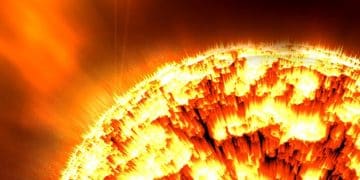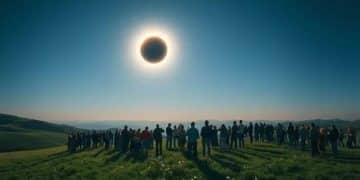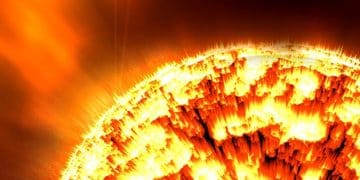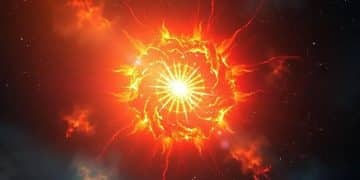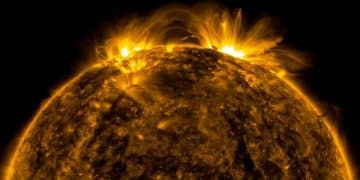Comet C/2023 A3: Will It Be a Naked-Eye Spectacle in the US?

Comet C/2023 A3 (Tsuchinshan-ATLAS) has the potential to become a naked-eye comet in late 2024 for observers in the US, offering a celestial spectacle if it survives its close encounter with the sun and Earth.
Get ready, skywatchers! Comet C/2023 A3 (Tsuchinshan-ATLAS) is generating excitement as it journeys toward the inner solar system, raising hopes that it could become a dazzling Comet C/2023 A3 (Tsuchinshan-ATLAS): Will it Be Visible to the Naked Eye in the US by Late 2024? for viewers across the United States.
What is Comet C/2023 A3 (Tsuchinshan-ATLAS)?
Comet C/2023 A3 (Tsuchinshan-ATLAS) is a long-period comet discovered in early 2023 by the Purple Mountain Observatory in China (Tsuchinshan) and the Asteroid Terrestrial-impact Last Alert System (ATLAS) in South Africa. This celestial wanderer is currently making its way toward the inner solar system, offering the potential for a spectacular display in the late months of 2024.
Understanding the nature of comets is crucial when anticipating potential viewing experiences. Comets are essentially cosmic snowballs, composed of ice, dust, and rocky material. As a comet approaches the sun, solar radiation causes the ice to sublimate, releasing gas and dust that form a coma (a fuzzy atmosphere around the nucleus) and often one or more tails. This process is what makes comets visible from Earth.
Discovery and Naming
The dual naming of the comet reflects its discovery by two independent observatories, highlighting the collaborative nature of astronomical discoveries in the modern era. The “C/” designation indicates that it is a non-periodic comet, meaning its orbital period is very long (potentially thousands of years) or that it is on an open trajectory, possibly never returning to the inner solar system.
Orbital Characteristics
Comet C/2023 A3’s orbit is highly elliptical, taking it from the distant reaches of the solar system towards a close encounter with the sun. The critical point to note is its perihelion – its closest approach to the sun. This will occur in late September 2024. The comet will then pass relatively close to Earth in October 2024, which is when viewing opportunities are expected to peak.
The following points summarize the comet’s key properties:
- Long-period comet discovered in 2023.
- Named after the Purple Mountain Observatory (Tsuchinshan) and ATLAS.
- Will reach perihelion (closest approach to the sun) in late September 2024.
- Will approach Earth closely in October 2024.
In summary, Comet C/2023 A3 (Tsuchinshan-ATLAS) is a newly discovered comet on track to make a close approach to both the sun and Earth, setting the stage for a potentially remarkable visual experience. Its orbital characteristics mean it may be bright enough to view with the naked eye.
When and Where to See It in the US
For those eager to witness Comet C/2023 A3 (Tsuchinshan-ATLAS): Will it Be Visible to the Naked Eye in the US by Late 2024?, pinpointing the optimal viewing times and locations is critical. Predictions about a comet’s brightness are always subject to uncertainty, but current estimates suggest that the comet could reach naked-eye visibility in late 2024.
Optimal viewing opportunities for Comet C/2023 A3 are expected to occur in October 2024. After its perihelion, Comet C/2023 A3 will be positioned well for viewing from the Northern Hemisphere, including the United States. Observers in the US should look towards the eastern horizon before sunrise, in the days and weeks following the comet’s closest approach to Earth.
Predicting Brightness and Visibility
Predicting the exact brightness of a comet is notoriously challenging. Many factors can influence a comet’s visibility, including its size, composition, and how much gas and dust it releases as it nears the sun. Some comets experience dramatic outbursts, suddenly becoming much brighter than expected, while others fizzle out. Thus, while optimism is high, it is important to remember that Comet C/2023 A3’s actual performance may differ from current projections.
Prime Viewing Locations
To maximize the chances of seeing the comet, it is important to find a location with dark skies, far away from city lights. Light pollution can significantly reduce the visibility of faint celestial objects like comets. Rural areas, national parks, and designated dark sky sites are excellent choices for comet viewing.
Key considerations for US observers:
- Time: Look towards the eastern horizon before sunrise in October 2024.
- Location: Choose dark sky locations away from city lights.
- Equipment: While potentially visible to the naked eye, binoculars or a small telescope can enhance the view.
In short, keep an eye on updated predictions as 2024 progresses, and plan to venture out to a dark location in October. That timing provides the best shot at witnessing Comet C/2023 A3 (Tsuchinshan-ATLAS): Will it Be Visible to the Naked Eye in the US by Late 2024?.
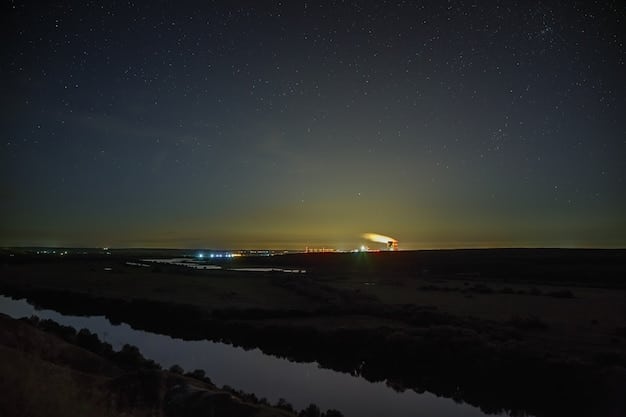
What Makes This Comet Special?
Many comets visit our solar system, but not all become widely visible spectacles. Comet C/2023 A3 (Tsuchinshan-ATLAS) has garnered heightened attention due to a combination of factors that suggest the potential for exceptional brightness.
One of the primary reasons for excitement is the comet’s trajectory. Its orbit brings it very close to both the sun and Earth, which significantly increases the amount of solar radiation it receives. This increased radiation can lead to greater sublimation of ice and dust, resulting in a more prominent coma and tail. Additionally, the comet’s composition plays a vital role. It appears to be rich in volatile compounds, which enhance its potential for a bright display.
Close Solar Approach
Comets that pass very close to the sun – so-called sun-grazers – often exhibit intense activity as the solar heat vaporizes their ices. While Comet C/2023 A3 is not a sun-grazer in the strictest sense, its relatively close perihelion means it will still experience substantial heating.
Earth Proximity
The closer a comet gets to Earth, the brighter it appears in our sky. Comet C/2023 A3 will make a reasonably close approach to our planet, further boosting its apparent brightness. The exact distance will determine how large and detailed the comet appears.
Factors contributing to the comet’s potential:
- Its orbit takes it close to both the sun and the Earth.
- It appears to be rich in volatile compounds.
- Its close solar approach may cause intense activity.
Therefore, the combination of a close solar approach, Earth proximity, and potentially high volatile content makes Comet C/2023 A3 (Tsuchinshan-ATLAS): Will it Be Visible to the Naked Eye in the US by Late 2024? a particularly interesting comet.
The Science of Comets: A Brief Overview
To truly appreciate the potential spectacle of Comet C/2023 A3 (Tsuchinshan-ATLAS), it’s helpful to understand the basic science behind these icy visitors.
Comets are remnants from the formation of our solar system, dating back approximately 4.6 billion years. They reside in the distant Oort Cloud and Kuiper Belt. Occasionally, gravitational disturbances nudge comets from these far-flung regions towards the inner solar system.
Cometary Composition
As mentioned previously, comets are often described as dirty snowballs. Their nuclei are composed of ice (water ice, but also other frozen compounds like methane and ammonia), dust grains, and rocky particles. The exact composition varies from comet to comet, which affects how they respond to solar radiation.
The Coma and Tail
The most distinctive features of comets are their coma and tail. The coma is a temporary atmosphere that forms as the comet approaches the sun and its ices sublimate. Solar wind and radiation pressure push particles away from the coma, creating one or more tails. A dust tail is made of dust particles and tends to be broad and curved, while an ion tail is composed of ionized gases and is typically straighter and more bluish in color.
Key takeaways regarding comet science:
- Comets are remnants from the formation of the solar system.
- They are composed of ice, dust, and rocky material.
- As they approach the sun, solar radiation creates a coma and tail.
In essence, comets provide us with valuable insights into the early solar system. Watching a comet like Comet C/2023 A3 (Tsuchinshan-ATLAS): Will it Be Visible to the Naked Eye in the US by Late 2024? is like looking back in time to the very beginnings of our planetary neighborhood.
Potential Challenges and Uncertainties
While there’s considerable excitement surrounding Comet C/2023 A3 (Tsuchinshan-ATLAS), it’s important to acknowledge that numerous uncertainties could impact its predicted brightness and visibility.
One of the most significant challenges is predicting how the comet will respond to the intense solar radiation as it nears the sun. Comets are fragile objects, and the rapid heating can cause them to fragment or even completely disintegrate. This has happened to many comets in the past, dashing hopes of a spectacular display. Even if the comet survives its solar encounter, it may not brighten as much as expected.
Cometary Fragmentation
The nucleus of a comet is held together by relatively weak gravitational forces. As it heats up, internal pressures can build, leading to cracks and fissures. If these stresses become too great, the comet can break apart into smaller fragments. This process reduces the total surface area exposed to solar radiation, which can diminish its overall brightness.
Outbursts and Fizzles
Cometary activity is often erratic. Some comets experience sudden outbursts, where they release large amounts of gas and dust, causing them to brighten dramatically for a short period. Conversely, other comets underperform, failing to brighten as much as predicted. It is hard to know in advance which behavior a particular comet will exhibit.
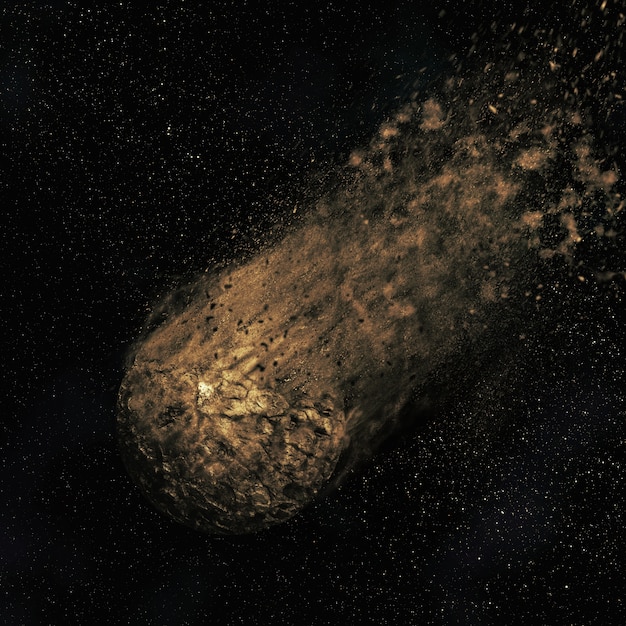
Potential pitfalls to keep in mind:
- The comet could fragment or disintegrate as it nears the sun.
- It may not brighten as much as predicted.
- Cometary activity is often unpredictable.
Consequently, it’s wise to temper expectations and approach the Comet C/2023 A3 (Tsuchinshan-ATLAS): Will it Be Visible to the Naked Eye in the US by Late 2024? with cautious optimism. Even if not a showstopper, it might still offer a compelling view through binoculars or a telescope.
How to Prepare for Comet Viewing
If Comet C/2023 A3 (Tsuchinshan-ATLAS) lives up to its promise, people in the US will want to be ready to observe it. Preparation involves knowing where and when to look, having the right equipment, and understanding how to optimize your viewing experience.
Scouting locations and checking weather forecasts are crucial steps. Dark sky locations are best, so plan a trip outside of urban areas. Clear skies are a must, so monitor weather conditions, leading up to potential viewing dates. Equipment-wise, while naked eye visibility is the goal, binoculars or a small telescope can greatly enhance the view. Familiarize yourself with the night sky and download stargazing apps to assist with locating the comet.
Essential Gear
While Comet C/2023 A3 has the potential to be visible to the naked eye, binoculars or a small telescope can greatly enhance your viewing experience. Binoculars will provide a wider field of view, making it easier to locate the comet and observe its coma and tail. A telescope will offer a more detailed look at the comet’s nucleus and any fine structures in its tail.
Dark Sky Locations
To maximize your chances of seeing the comet, it is crucial to find a location with dark skies, far away from city lights. Light pollution can significantly reduce the visibility of faint celestial objects, like comets. Rural areas, national parks, and designated dark sky sites are ideal vantage points.
Steps you can take now:
- Research dark sky locations near you.
- Acquire binoculars or a small telescope.
- Download stargazing apps for your smartphone or tablet.
Overall, proper preparation is your ticket to potentially seeing Comet C/2023 A3 (Tsuchinshan-ATLAS): Will it Be Visible to the Naked Eye in the US by Late 2024?, or at least increasing your chances when October 2024 rolls around.
| Key Point | Brief Description |
|---|---|
| 🔭 Comet Discovery | Discovered in early 2023 by Tsuchinshan and ATLAS observatories. |
| ☀️ Perihelion | Closest approach to the sun in late September 2024. |
| 🌍 Earth Approach | Closest approach to Earth in October 2024. |
| 🌃 Visibility | Potentially visible to the naked eye in dark locations in the US. |
Frequently Asked Questions
▼
The best time for viewing Comet C/2023 A3 in the US is expected to be in October 2024, particularly in the days and weeks immediately following its closest approach to Earth. Look towards the eastern horizon before sunrise.
▼
The best places to observe Comet C/2023 A3 are dark sky locations away from city lights. Rural areas, national parks, and designated dark sky sites provide the best viewing opportunities due to minimal light pollution.
▼
While Comet C/2023 A3 has the potential to be visible to the naked eye, binoculars or a small telescope can greatly enhance the viewing experience, allowing you to see the comet’s coma and tail more clearly.
▼
Current estimates suggest that Comet C/2023 A3 could reach naked-eye visibility, but predicting comet brightness is challenging. Its actual brightness will depend on its composition and how it reacts to solar radiation.
▼
Several factors could prevent the comet from becoming visible, including fragmentation of the nucleus, an underperformance in brightness, or unexpected outbursts. Cometary activity is often unpredictable, and outcomes can vary.
Conclusion
Comet C/2023 A3 (Tsuchinshan-ATLAS) presents a promising opportunity for skywatchers in the US. While uncertainties remain regarding its ultimate brightness, planning ahead by finding dark viewing locations and acquiring binoculars can maximize the chances of witnessing what could be a spectacular celestial event in late 2024.
